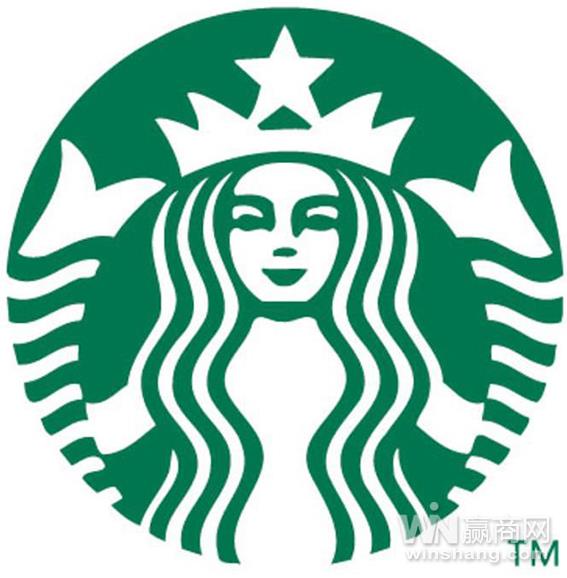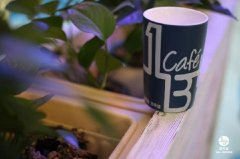Starbucks is getting farther and farther away from professional coffee under the performance bottleneck of fecal bacteria.

For professional baristas, please follow the coffee workshop (Wechat official account cafe_style)
After six consecutive quarters of sales that failed to meet Wall Street expectations, Starbucks announced that it was starting to rescue the results by focusing on its food business.
On the 25th anniversary of Starbucks' Nasdaq listing, Scott Maw, chief financial officer of Starbucks, said the top priority was to increase the share of food in total revenue, according to CNBC. While it is anxious about performance, it has also fallen into a food safety storm recently. According to a sample survey of three coffee chains in the British market by British media BBC, Starbucks ice cubes contain a variety of bacteria, including bacteria from feces. Among them, 3 of Starbucks'10 samples were detected with fecal coliform bacteria.
Starbucks China Public Relations official said in a written reply to the China Business Daily that in China, Starbucks has a high-standard quality assurance system, and the production and use of ice cubes in its stores meet relevant national standards. However, as of press time, Starbucks did not respond to the performance questions asked in the interview letter.
According to Lu Shengzhen, a brand marketing expert, Starbucks, in the face of performance bottlenecks, hopes that the food business may gradually lose its coffee expertise, leading to a weakening of competitive differentiation. At the same time, Starbucks is also actively developing high-end stores in order to play down the unprofessional impact of pan-dining on consumers.
Trapped in the phylum of fecal bacteria
Fecal coliform bacteria have been detected in ice drinks from three common coffee chains in the UK, including Starbucks, Costa and Caffe Nero, according to a plainclothes investigation team at BBC. Among them, three out of 10 samples were detected with fecal coliform bacteria at Starbucks.
Public data show that coliform group is not a taxonomic nomenclature of bacteriology, but a term in the field of hygiene. it refers to a group of bacteria with certain characteristics and related to fecal pollution. Fecal coliform group is a kind of coliform group, also known as heat-resistant coliform group. According to the Washington State Department of Health, fecal coliform parasites in the feces of humans and other warm-blooded animals, causing harm to human health. The report also shows that fecal coliform is often used as a "barometer" of water quality. If fecal coliform bacteria are detected in drinking water sources, it usually means that the water quality is poor and may contain other germs, which requires an immediate and comprehensive investigation.
Liu Shaowei, a professor in the Department of Food Science and Engineering at East China University of Science and Technology, told reporters: "fecal coliform is a kind of bacteria in feces, and it is a kind of coliform. In fact, there was news of bacteria exceeding the standard in ice cubes a few years ago." The detection of fecal coliform bacteria at Starbucks may be due to poor hygiene, such as employees who have gone to the bathroom and did not wash their hands, they may bring bacteria to the ice cubes, or the water that originally made the ice cubes may contain bacteria. Starbucks has to make rectification, which means that it must be strictly controlled at every key work point, starting with the tap water for making ice cubes, which should meet the requirements, and secondly, the cleanliness and hygiene of all kinds of equipment for storing ice cubes. There is also the management of staff hygiene. "
In response, Starbucks China replied: "Starbucks always adheres to its commitment to excellent quality and service, and gives top priority to providing customers with high quality, safe and reliable food and beverages." In China, Starbucks has a high-standard quality assurance system, and the production and use of ice in its stores are in line with relevant national standards. " However, it does not explain the specific content of the relevant national standards. In fact, at the end of 2015, Starbucks was involved in the "sole door". Starbucks admitted that the cakes sold in China contained azoformamide, but the dosage was within the legal range, and promised that the food sold by Starbucks in China was safe. Fully in line with China's food safety laws and regulations.
"the detection of fecal coliform is a serious blow to Starbucks, which is now not only a coffee brand, but also a social artifact, not only with product functions, but also face-saving and social functions. The incident has laid a great hidden worry for Starbucks' long-term development." Said Zhu Danpeng, a researcher in the food and beverage industry at the China Brand Research Institute.
Lu Shengzhen, an expert in brand marketing, pointed out that on the whole, Starbucks has relatively good control over food quality, but with the pace of pan-eating and drinking, it will purchase more and more varieties of products, and the sources of raw materials, processing methods and storage methods will become more and more complex. Starbucks needs to do a good job in the quality control of purchased or commissioned raw materials to avoid quality negligence caused by the onerous business.
In fact, in addition to the food safety incident, Starbucks ran into a lot of trouble last year. In the United States, for example, in March last year, Starbucks was sued by two California customers who believed that Starbucks cut at least 25% of its coffee in making lattes, falling short of the quota it had indicated on the menu. In China, Starbucks suffered the "medium Cup incident" at the end of last year. Lin Guotong, a consumer, mentioned in an open letter to Starbucks China CEO Wang Jingying that for six years, Starbucks shop assistants always raised objections to their cup-shaped choices, which prompted many netizens to complain about Starbucks.
Getting further and further away from professional coffee?
According to Starbucks' second-quarter 2017 results released on April 27, its global and u.s. same-store sales grew by just 3%, falling short of wall street expectations of 3.7% and 3.5%. In addition, Starbucks' global revenue of $5.29 billion also fell short of the estimated $5.41 billion. For the sixth quarter in a row, Starbucks' same-store sales fell short of analysts' expectations. Starbucks said it would no longer include its expected target in its financial results.
In fact, in order to achieve performance growth, Starbucks has raised the price of all its coffee products by two or three yuan since 2016 to make up for the lack of profitability. But relying on higher prices for coffee and peripheral products, Starbucks CEO Kevin Johnson has lowered his growth target for fiscal year 2017, falling short of the expected growth target.
Starbucks, which has hit the ceiling of growth, seems to have to look for the next growth engine. Scott Maw, chief financial officer of Starbucks, began pinning his hopes on the food business, saying that five years ago, 16 per cent of Starbucks's total revenue came from food, which now contributes about 20 per cent of revenue and has plenty of room for growth.
Starbucks' food business began with the acquisition of bakery La Boulange in 2012, which helped Starbucks' food sales grow by 50 per cent in 2013. In April, Starbucks began testing its latest lunch program, Mercato, in Chicago, featuring ready-to-eat salads, sandwiches and a variety of high-protein, healthy foods, priced at $8. Starbucks said the fastest growth in food sales was between 11:00 and 1 p.m. But that doesn't mean consumers will see Starbucks as their first choice for lunch. Scott Maw believes that while Starbucks breakfast is good, lunch will be an important part of their future food business growth. The Mercato project is doing very well, and Starbucks is planning to push Mercato into more markets.
The practice of "decaffeination" is also reflected in Starbucks' localization efforts to dig deep into the Chinese market. In July last year, Starbucks launched the "fresh Food" project in parts of China, launching 38 meals from brunch to desserts in 12 provinces, including Sichuan, Qinghai and Henan, to increase the proportion of food products in Starbucks stores. Zhu Danpeng said: "Starbucks is doing this to maximize the profit of its stores, as well as their sinking of the global market, especially China's 34th and 5th tier market. If they do not expand the share of the entire food, it is difficult to match the perception and favor of Starbucks consumers."
"the flip rate of a simple coffee shop is low, consumers stay in the store for too long, and the high cost of rent and decoration can not meet its sufficient profits. However, focusing on developing the food business is a challenging and risky choice for Starbucks, which makes professional coffee. In the future, Starbucks will be farther and farther away from professional coffee. From the consumers' point of view, this will further reduce the sense of value of Starbucks coffee in their hearts; from the perspective of competition, it shows that it has to succumb to market pressure and peer competition pressure. move towards the practical consumption of coffee plus diet and gradually abandon the coffee professionalism and culture that have persisted for many years, resulting in a weakening of competition model differentiation. " Lu Shengzhen said.
At the same time, Starbucks is pinning its hopes on high-end stores to drive growth. At the end of 2014, Starbucks opened the world's largest flagship coffee store in Seattle, the Starbucks boutique bakery (Starbucks Roastery), a more high-end "roaster" model that also has many stores in China, and a new store opened in Shanghai Xingye Taiguhui in May. The above-mentioned experts told reporters that the development of high-end stores is to play down the impact of the sinking of its channels and the pan-eating of products on consumers' sense of unprofessionalism. This approach can improve to a certain extent, but it will not play a decisive role, so it can only be regarded as a positive countermeasure corresponding to the impact of non-coffee specialization.
In addition, Starbucks' dependence on the Chinese market is even more obvious. According to the financial report, revenue in the Asia-Pacific region increased by 13% in the second quarter compared with the same period, and the largest part of the contribution came from China. It currently has more than 2300 stores in mainland China, and Starbucks says it will expand to 5000 in 2021. In recent years, Starbucks has made frequent moves in China. in addition to digital initiatives such as opening Tmall's flagship store, WeChat Pay and partnering with Starbucks, Starbucks has also introduced its tea brand Teavana to China and recently launched more flavors of bottled Frappuccino, which is also seen as a further "compromise" to the Chinese market by Starbucks, which has encountered a performance ceiling.
Important Notice :
前街咖啡 FrontStreet Coffee has moved to new addredd:
FrontStreet Coffee Address: 315,Donghua East Road,GuangZhou
Tel:020 38364473
- Prev

This coffee shop can stay all day for less than 30 yuan! Food and drink are completely free!
Professional baristas follow the coffee workshop (official Wechat account cafe_style) if you want to find a quiet place to sit down to work or review your lessons, many people will spend money to go to the coffee shop for a whole day. But it will inevitably cost a lot of money to spend a whole day in a good coffee shop. But there is a coffee shop in Sri Petaling, which only needs RM16.20 (RM: Malaysian forest)
- Next

This is the most popular way to name a cafe.
Professional barista communication Please pay attention to the coffee workshop (Wechat official account cafe_style) what kind of coffee shop is popular? Coffee should be authentic, rich in variety, professional and good-looking, and the environment should be elegant and comfortable. Coffee operators will take these aspects into consideration. However, the name of the coffee shop is ignored by many operators, but they do not realize that the name of the coffee shop is also very important.
Related
- What documents do you need to go through to open a coffee shop? coffee shop coffee shop certificate processing process
- How to purchase Coffee beans in small Cafe how to choose a suitable supplier for domestic Coffee supply Company
- How to drink Starbucks Fragrance White Coffee? how to make Australian White Coffee? what Italian coffee beans are recommended?
- The Story of Flora Coffee: the name of Flora Coffee Bean and the implication of the Flowers on Florna Coffee
- How much does a cup of coffee cost? How much is the profit of a cup of coffee? What is the profit of the coffee shop in a year?
- Yunnan small Coffee, known as "fragrant Coffee", introduces the characteristics of Alpine Arabica Coffee producing areas in Yunnan, China
- 2023 latest Starbucks full menu price list how much is a cup of Starbucks coffee what is better to drink the most popular hot and cold drinks recommended
- Starbucks different kinds of Coffee Price list Starbucks menu 2023 Top Ten Best drinks in Starbucks
- Starbucks Spring praise Comprehensive matching Coffee Bean theme Story Packaging implication and taste description
- The cost of a cup of coffee latte American coffee cost price and selling price

